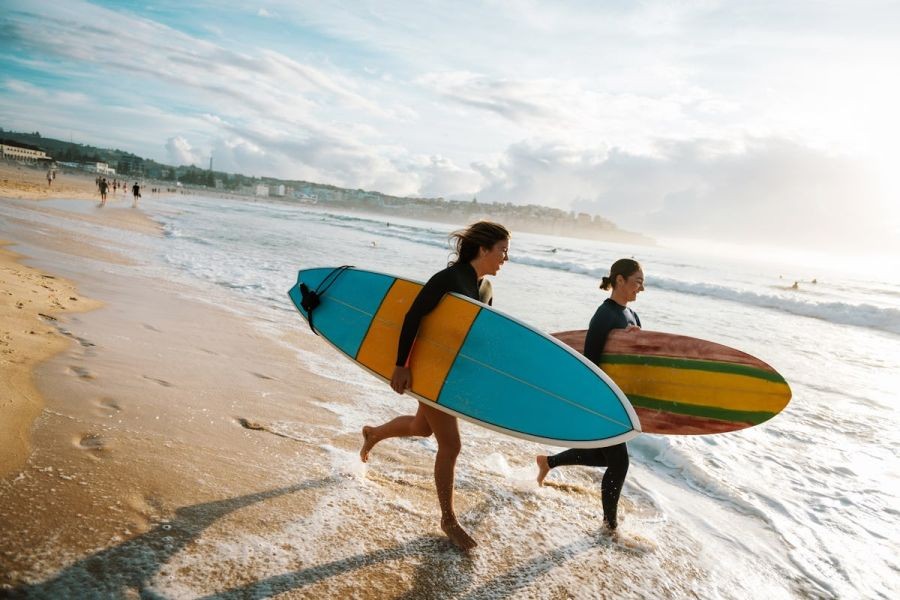Surfing in Australia: Beyond the Instagram Glamour
Picture-perfect waves, golden beaches, and sun-kissed surfers dominate Instagram feeds, selling the idea that surfing in Australia is nothing short of a perpetual vacation. However, while the allure is undeniable, the reality for many surfers and coastal communities paints a different picture. The sport, deeply embedded in Australian culture, faces challenges that are often overshadowed by social media's curated perfection. This article delves into the complexities of surfing in Australia, providing a critical analysis for infrastructure consultants and industry stakeholders, highlighting the intersection of sport, economy, and environment.
The Economic Impact of Surfing in Australia
Surfing significantly contributes to Australia's economy, with the Australian Bureau of Statistics (ABS) estimating the industry's worth at over AUD 3.3 billion annually. This encompasses apparel, equipment, tourism, and surf school revenues. Yet, beneath this economic boon lies a myriad of challenges that warrant attention from infrastructure consultants and policymakers.
Case Study: Byron Bay – Balancing Tourism and Local Economies
Problem: Byron Bay, a mecca for surfers, has witnessed a surge in tourism-driven economies. However, the influx of visitors strains local infrastructure, leading to increased property prices and living costs, alienating local residents.
Action: Local government initiatives aimed at sustainable tourism have been implemented. These include stricter zoning laws and investments in public transport to mitigate congestion.
Result: As a result, Byron Bay has managed to balance tourist influx with local needs, though challenges persist with housing affordability.
Takeaway: Infrastructure consultants must prioritize sustainable urban planning to ensure tourism benefits without compromising local communities.
Environmental Challenges: The Hidden Costs
While surfing celebrates nature, it is not immune to environmental challenges. Rising sea levels and beach erosion, exacerbated by climate change, threaten the very beaches that surfers cherish. The Commonwealth Scientific and Industrial Research Organisation (CSIRO) projects a potential sea level rise of up to 1.1 meters by 2100, significantly impacting Australia’s coastlines.
Pros vs. Cons: Surfing and Environmental Impact
Pros:
- Economic Benefits: Surfing attracts significant tourism and boosts local economies.
- Social Cohesion: The sport fosters community engagement and cultural identity.
- Environmental Advocacy: Surfing communities often lead environmental conservation efforts.
Cons:
- Environmental Degradation: Increased foot traffic and construction along coastlines contribute to erosion.
- Resource Strain: High tourist numbers strain local resources and infrastructure.
- Carbon Footprint: Travel associated with surfing contributes to carbon emissions.
Surfing Regulations and Safety Concerns
Instagram's portrayal of surfing often glosses over the sport's inherent risks. From powerful riptides to unpredictable weather conditions, safety is paramount. The Australian Competition & Consumer Commission (ACCC) emphasizes the need for adequate safety measures and regulations to protect surfers and beachgoers.
Case Study: Gold Coast's Safety Protocols
Problem: The Gold Coast, renowned for its surf, faced increased incidents of accidents due to overcrowded beaches and unpredictable weather conditions.
Action: Local authorities implemented advanced warning systems and increased lifeguard presence during peak seasons.
Result: These measures reduced accidents by 30% over three years, enhancing the region's reputation as a safe surfing destination.
Takeaway: Effective safety measures are crucial in maintaining both the sport's integrity and public safety.
Common Myths & Mistakes About Surfing in Australia
Myth: Surfing is only for the young and fit.
Reality: Surfing is inclusive, with programs designed for all ages and abilities, including adaptive surfing initiatives.
Myth: Surfing is always environmentally friendly.
Reality: While surfers are often eco-conscious, the sport's growth can lead to environmental degradation without sustainable practices.
Myth: All Australian beaches are perfect for surfing.
Reality: Not all beaches have suitable conditions, and some require advanced skills due to riptides and rocky outcrops.
Future Trends and Predictions
As surfing continues to grow in popularity, the industry faces both opportunities and challenges. The integration of artificial intelligence in forecasting surf conditions is an emerging trend, promising to enhance safety and optimize surf experiences. Additionally, virtual reality (VR) is set to revolutionize surf training, offering immersive simulations for skill development.
According to Deloitte's Surf Industry Report 2024, by 2030, technological advancements could lead to a 20% increase in global surf participation, with Australia remaining a key player in the industry.
Conclusion
Surfing in Australia, despite its idyllic representation on social media, is a complex interplay of economic, environmental, and social factors. For infrastructure consultants, the challenge lies in balancing these elements to foster a sustainable and inclusive surfing industry. As the sector evolves, embracing technological innovations and prioritizing sustainable practices will be crucial in navigating future challenges.
What are your thoughts on the future of surfing in Australia? Join the conversation and share your insights below!
People Also Ask (FAQ)
How does surfing impact the Australian economy? Surfing contributes over AUD 3.3 billion annually to Australia's economy, supporting tourism, apparel, and local businesses.
What are the biggest misconceptions about surfing in Australia? Common myths include the idea that all beaches are perfect for surfing and that the sport is exclusively for the young and fit.
What upcoming changes in Australia could affect surfing? Technological advancements in AI and VR are set to enhance surfing experiences, while climate change may necessitate adaptive strategies for coastal management.
Related Search Queries
- Surfing in Australia costs
- Environmental impact of surfing
- Sustainable tourism in Byron Bay
- Surf safety regulations Australia
- Future of surfing technology
- AI in surf forecasting
- Virtual reality surf training
- Surf industry economic impact
- Challenges for Australian surfers
- Adaptive surfing programs



























C&I Studios
7 months ago